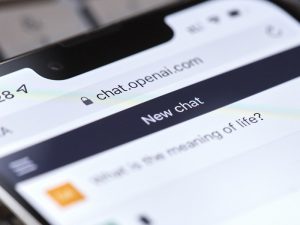Google takes on Amazon & Roku with Android TV
![]() Google is planning something big for televisions, but it won’t be nearly as big as Google TV.
Google is planning something big for televisions, but it won’t be nearly as big as Google TV.
A report from The Verge this weekend states that it’s acquired documents describing what Google is planning for your TV sets. Some of you may grunt and say ‘Haven’t they learned their lesson from Google TV?’ But the search giant is not working on something so grand.
Dubbed the “Android TV”, Google’s building a set-top box with a new interface, which means it will work similarly to Apple TV, Roku, and the newly released Amazon Fire TV. It features cards which shows poster-like covers of movie, TV show, or book titles, which you can navigate and explore using a remote. The remote features a four-directional pad so you can scroll left or right for titles, or up and down for categories. There will also be Enter, Home, and Back buttons for navigation, the leaked document stating that there will also be “optional” game controllers. Android TV will have voice input and notifications, but Google has advised developers to limit notifications.
“Android TV is an entertainment interface, not a computing platform,” Google allegedly wrote in the leaked document.
“It’s all about finding and enjoying content with the least amount of friction.” It will be “cinematic, fun, fluid, and fast.”
Google is said to be courting select app developers to create apps and games for Android TV, and is encouraging these developers to create apps with consistent interfaces. The screenshot from The Verge shows that Android TV will feature many of Google’s native apps like Play Movies, YouTube and Hangouts, as well as third-party apps such as Vevo, Netflix, Hulu, and Pandora.
It looks like Google has learned its lesson from the failed Google TV project, since its obviously working on something that they know already works and consumers are more open to trying out. The main reason Google TV failed to attract consumers the last time around is that it required the purchase of new Smart TVs running the platform, and we all know how expensive Smart TVs are. Set-top boxes such as the Apple TV and Roku are way cheaper, therefore more consumers are attracted to them.
Image via The Verge
Google’s focus for Android TV is simplicity – by making it easier to set up for consumers and developers. It’s dismissed unneeded features such as telephony, cameras, touchscreen support and near-field communication to keep developers focused on building the kinds of apps that consumers would love.
The copycat?
Based on the features of Android TV, it seems Google is working on a copycat of Amazon’s Fire TV and Roku 3. Fire TV has a Voice Search feature which allows users to directly go to the content they like just by speaking to the built-in mic on the remote. Though it isn’t clear how Google plans to implement voice input for Android TV, it would most likely be similar to that of the Fire TV. Roku 3 introduced gaming to set-top boxes with its Wii controller-like remote, which Amazon copied and used on the Fire TV, though it added a dedicated game controller which consumers can purchase separately.
Android TV is also expected to support games, but it isn’t clear whether the remote can be used as a game control, as the leaked document only mentions “optional” game controllers. If Google makes its remote double as a game controller, then provides a dedicated gaming control as well, it’s clearly taking notes from Amazon.
Game consoles like the Xbox One and the PlayStation 4 are quite expensive, so purchasing a set-top box with gaming features may be far more attractive to consumers, especially parents on a tight budget.
Chromecast going away?
![]() Google already has a media streaming device, Chromecast, which only costs $35. Will the arrival of Android TV mean the USB streaming media device will be discontinued by Google? Not likely.
Google already has a media streaming device, Chromecast, which only costs $35. Will the arrival of Android TV mean the USB streaming media device will be discontinued by Google? Not likely.
Google’s TV offerings will appeal to more consumers if it can offer two separate devices for streaming content: a higher-end set-top box with more features and a more affordable dongle with less features that still offers the same media content.
For developers, having two media streaming devices from Google means they may need to develop apps with two interfaces to support the Android TV and Chromecast. Though this may mean more work for developers, it could also mean more revenue, as they will be reaching more consumers from different income brackets.
Google has declined to comment on the issue.
Photo credits: Mike Shaheen via photopin cc; evans.photo via photopin cc
A message from John Furrier, co-founder of SiliconANGLE:
Your vote of support is important to us and it helps us keep the content FREE.
One click below supports our mission to provide free, deep, and relevant content.
Join our community on YouTube
Join the community that includes more than 15,000 #CubeAlumni experts, including Amazon.com CEO Andy Jassy, Dell Technologies founder and CEO Michael Dell, Intel CEO Pat Gelsinger, and many more luminaries and experts.
THANK YOU





















